The Longines Hour-angle watch is history’s most famous pilot watch and improved upon the Weems second setting wristwatch model developed a few years earlier. It was made in a number of different generations, and whilst each and every vintage piece is rare in its own right, the first-generation Hour-angle is largely unknown due to its delivery during the Great Depression, ensuring a very small production and just a handful of survivors today.
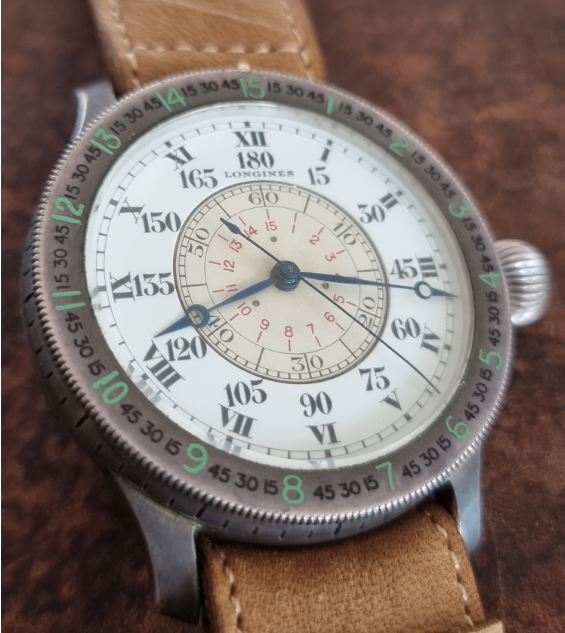
The “Lindbergh” model essentially allowed one to calculate longitude, the hands giving you time in hours, minutes, and seconds, whilst the bezel and the inner chapter allowed you to establish your position in degrees, and units of the arc based on the bezel graduations and inner chapter markings.

Longines archives indicate that there were often four years separating manufacture and delivery date for a number of pieces between 1931 and 1937. Detailed examination and analysis of delivery dates of almost all 50 plus surviving vintage Lindbergh models point to a complex sales and delivery period post the flow on effects of the Great Depression of October 1929.
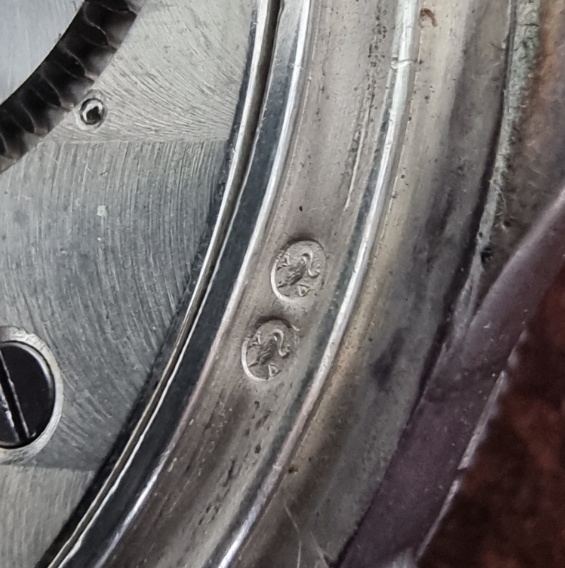
By 1931, US Longines sales had literally collapsed, dwindling to the lowest point since A. Wittnauer Company was formed with the US agent deliveries being made on a stop gap basis only.
Hour-angle samples were delivered to Heinmuller in February 1931, Lindbergh commented upon performance and accuracy in July 1931, and a patent request filed later in October of the same year. The author opines that some of the very first reference 3210 pieces were most likely delivered in November 1931. The following are known to be in the earliest of batches – 5147631 (Dieudonne Costes watch), 5147636 and 5147646.
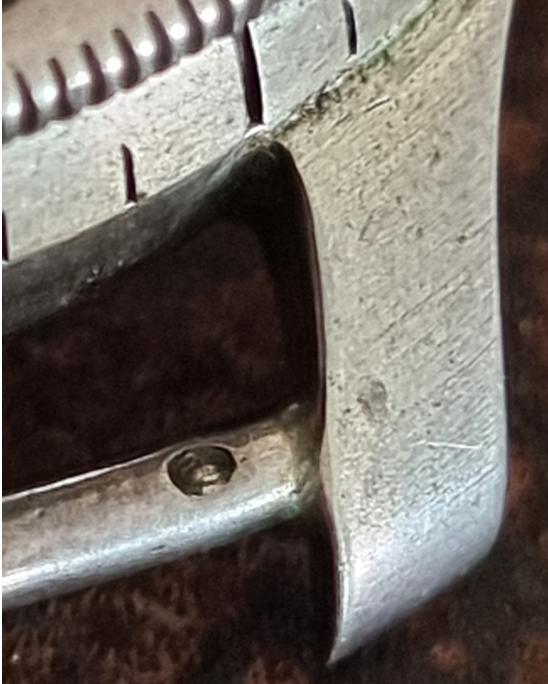
Despite being patented in October 1931, out of 50 known vintage archive records and some other examples held by collectors, there appear to be no known deliveries between November 1931 and May 10, 1935 into the US or elsewhere. Longines records note delivery of a small handful of Wittnauer signed Lindbergh models in May 1935. To date, just one of these Wittnauer signed Lindbergh pieces has been seen by the author.
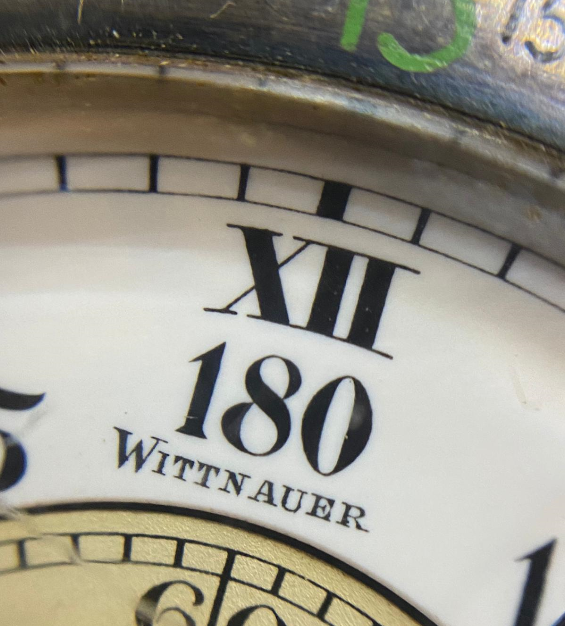
The first version Wittnauer logo featured on the Lindbergh (above), an aircraft calotte from the same time were the same as the famous Wittnauer All-proof with a larger capital “W”. The Hour-angle signing appears rushed and almost an afterthought. A new Wittnauer logo followed on large Weems models two months later and changed again in late 1937.
The addition of the Wittnauer name in May 1935, may have been connected with US import rules, or requested by the (soon to be) new owners of Wittnauer. Martha Wittnauer was on the verge of bankruptcy with the company sold to Hellah Delta in 1936, leading to the formation of a new entity, Longines-Wittnauer Co.
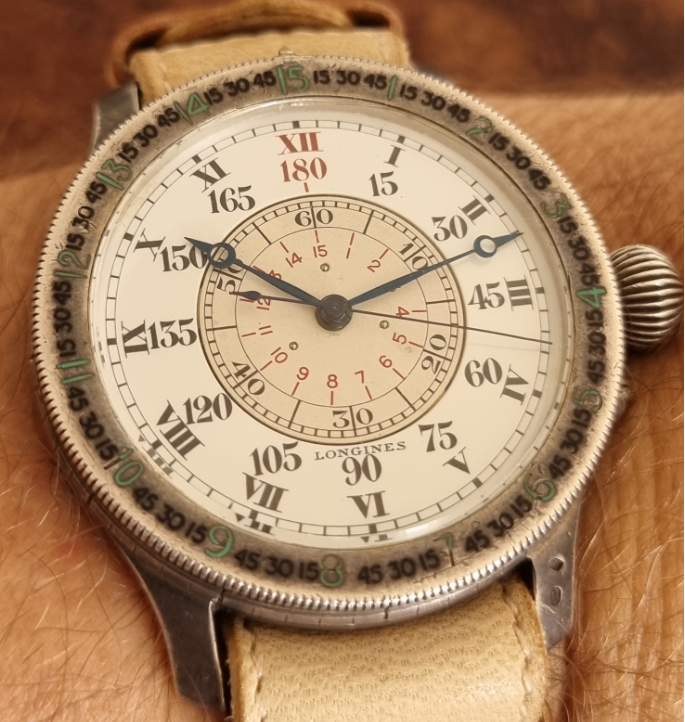
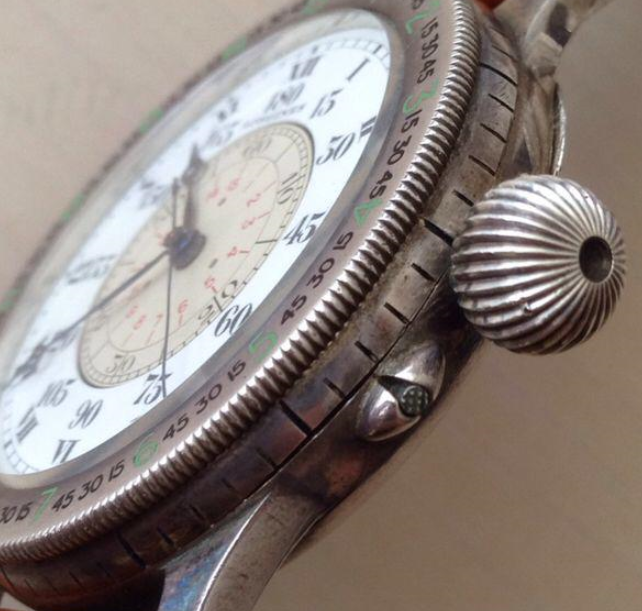
Given the sales issues noted, just a handful of the first generation Lindbergh pieces are known to exist. In a number of cases watches were made in 1933 yet not delivered till 1936/7, four years after manufacture.
The first generation Lindbergh has a number of unique characteristics. Both the case and bezel are solid silver with a thinner case profile, and flat lugs that have little downward sweep. The next three models used thicker cases with progressively more curvature of the lugs.
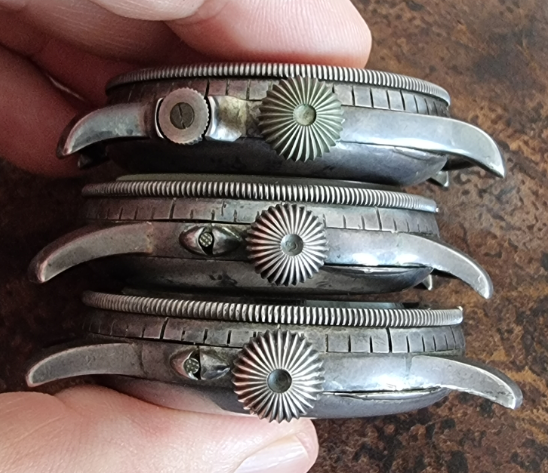
Pilot input would shape aesthetic and technical changes to the Hour-angle model to improve legibility and function.
The green and black enamel numbering for the unit of arc on the first model is small in size, with closed font 4’s for the 45 degree markings. Font size increases dramatically with the second, third and fourth generation bezels.
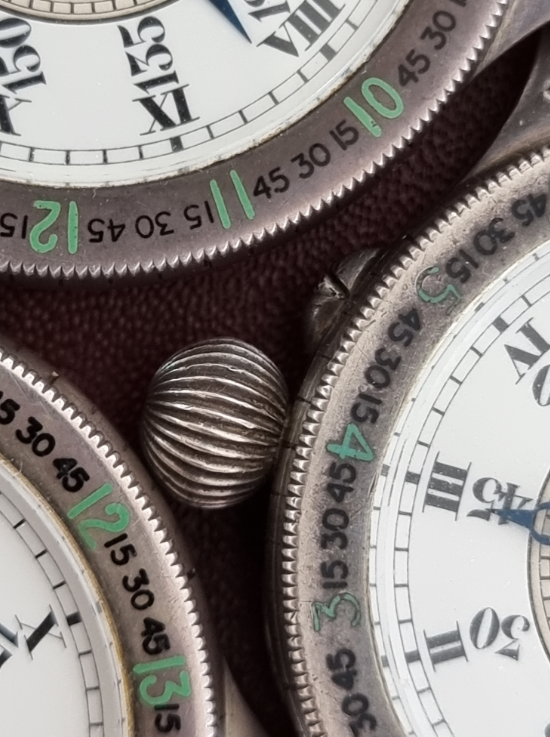
The bezel knurling on the first generation is more angular and the line markings on the side of the bezel differ to the two bezels that follow.
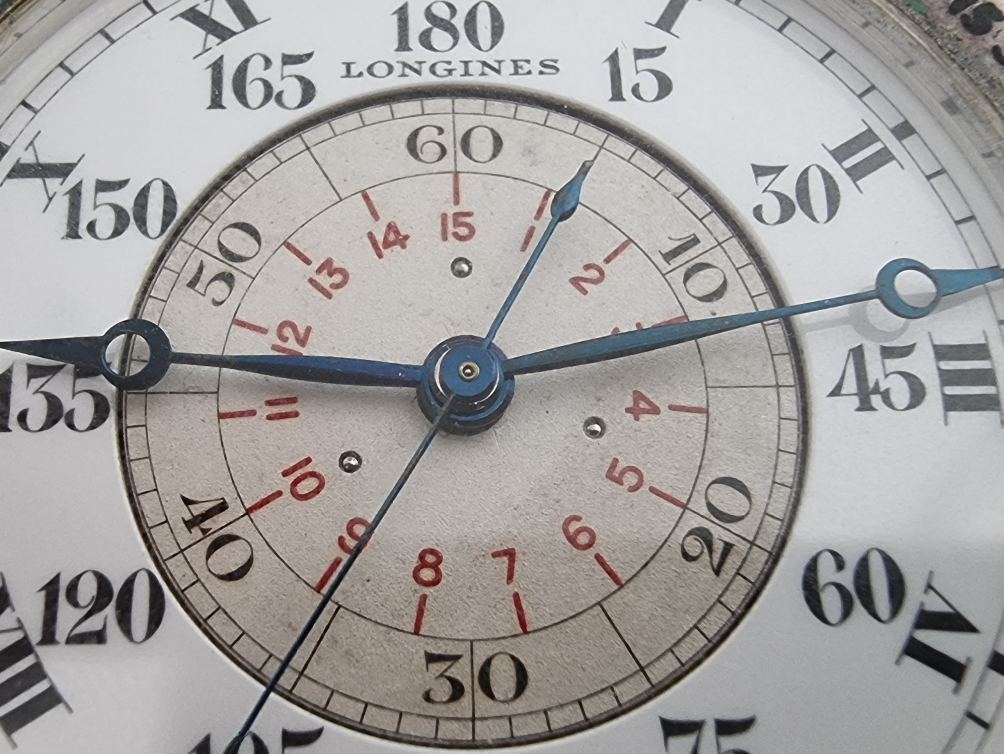
The dial text is black only, with the exception of two known red XII pieces, one serial number apart delivered to Portugal in December 1936.
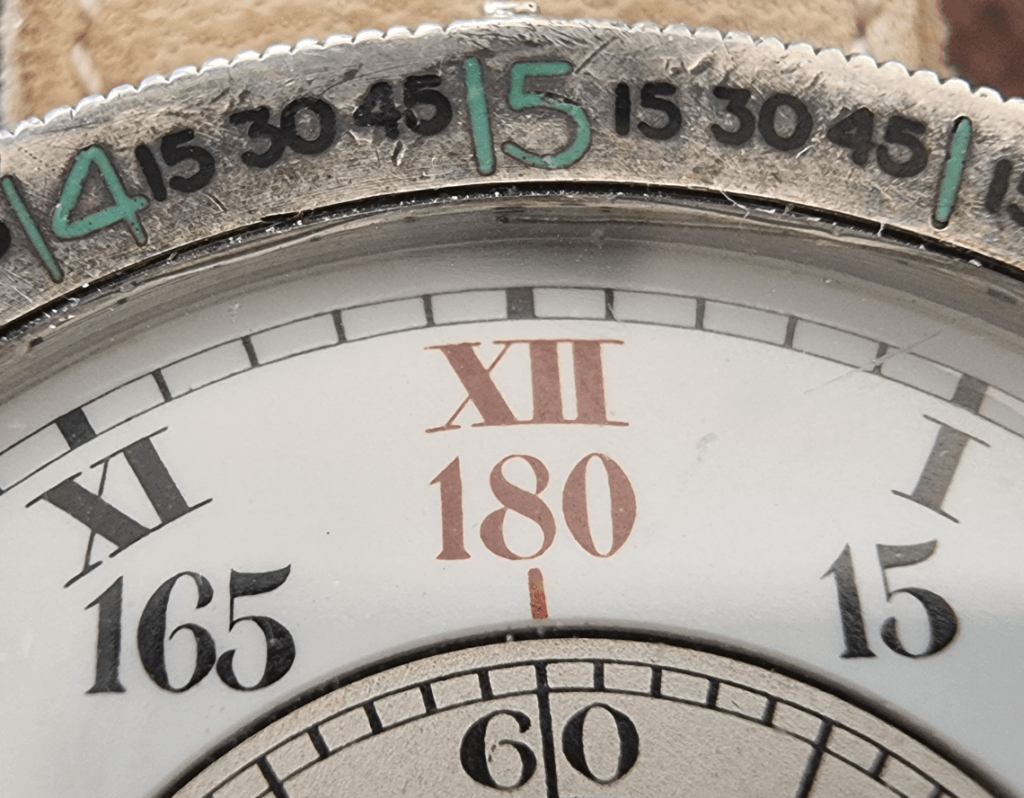
In 1938, blue was added to the dial to note the degree markings increasing legibility on the two colour print enamel dial.

The 18.69N calibre was used for the first three Hour-angle generations and available in either a nickel or gilt finish. Whilst the 37.9 had been developed in 1932, the first Lindbergh models using this calibre appear in the market around October 1940. They are replaced shortly afterwards by the 37.9N in 1941/2.

Beautifully engineered by Longines at a time when their technical team led by Alfred Pfister truly ruled the roost, the Lindbergh Hour-angle watch improved upon the incredible second setting wristwatch model of Weems. The 18.69N calibre had been a stable of their pocket watches for may years and was first developed in 1908. It may even even precede the Weems for claim to the very first wristwatch born with a calibrated turning bezel.

As the aviation industry blossomed, the complex challenges of avigation came to the fore and the lives of aviators and aviatrix depended on air navigation or avigation. Their need to make expedient, reliable calculations with a robust accurate timepiece and establish their position in the air was responsible for the creation of aviation’s most famous watch – the Longines Lindbergh Hour-angle.
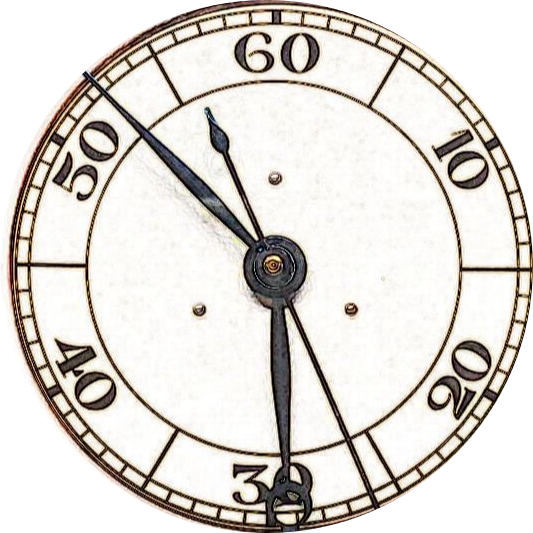
Good Morning,
I came across your cool article while researching about this!
I would like to ask you if you know which year and variation this one is below:
https://www.ebay.com/itm/166356586858?hash=item26bba0116a:g:qFoAAOSwf4JlGMCO&amdata=enc%3AAQAIAAAAwFwRKyncDsA98lDGydoXOpZOij1hS2VXC6OT7nC7QhMicZvpi0RXKPHV3aCnDH3a8qBoXD3i0M9HpDUIJ%2FxHCtPtVY6EnbokETSMaY5jpXfw5YaZB9kusL8bumvmW1Ctr2NIRK3ezo4u0SG5mAz3m6XZGmZvPRVhZItKRZbLcbwqDzutVSxuqcRvRVdLFnSzsr%2BBbn2lMZic2NzxbBSpuDfMoZShAnCs9zqNzSzQN53XQjBg4Hw%2F2Qz0yDOOrwDVvQ%3D%3D%7Ctkp%3ABk9SR7q8xezlYg
Thank you!
Greetings Andrew and apologies for the very belated reply. This is the 33mm gold fill version 1940’s at a guess. Sadly, it is well worn and in so so condition mate. Once again sincere apologies for the delay. Andy 😉